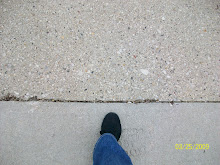 Milwaukee Bronzville: Walnut Way!
Milwaukee Bronzville: Walnut Way!Thursday, April 30, 2009
 Milwaukee Bronzville: Walnut Way!
Milwaukee Bronzville: Walnut Way! This Fall I had the pleasure of viewing the documentary "U People" I also had the opportunity to meet with the filmmakers Hanifah Walidah and Olive Demetrius.U People is an accidental documentary; the original intention was to film a music video, "Make a Move" by musician Hanifah Walidah, which later debut on LOGO. The video itself was a first of its kind, featuring an entire cast/crew of thirty women identifying as straight, gay, and Transgender. Once they began editing the footage, Hanifah and Olive began to take a closer look at the dialogue between such a diverse group of women, issues such as being gay/and or Transgender in the African American communities and the perceptions of roles such as "femme" and "butch”.
Prior to viewing the film, the filmmakers Hanifah and Olive held a workshop titled, The Beautiful Obstacle: Beyond a Double Consciousness. In this workshop we were divided into groups and began to brainstorm/contemplate words that describe femininity and characteristics of African American women. After the list was created, we then, as a group had to create a silent, short performance illustrating the characteristics we felt were the most prevalent in front of one another. This exercise helped us to understand how identities are socially constructed and the fact that there are multiple interpretations within those constructions. It was an excellent prelude to the film.
After watching the film I began to think about the concepts “Two Spirit” and “Transgender” and its connection with the African American community. Why is transgender identity viewed as taboo within the African American community? Why is there segregation within the gay community itself? Overall, I found the film inspiring and daringly raw- there was no filter.
Friday, April 3, 2009
Artist Statement
Erica Woods
Film 150
March 27, 2009
Artist Statement
I know Johnson’s Park as a glimmer of hope. I wanted to find these small pieces and magnify them through their heavy, burdened flaws of poverty, litter, and misconceptions. It was difficult to find the opportunity to connect with the people of this community, as a result, I had to open myself up to listening to the environment and nature and tap into it’s voice. The photos I have selected do just that, tells the story, the contemplation of the heart of Johnsons Park. On the surface level, Johnsons Park was wide, empty and spacious, but the more I began to blend/merge within this community the more heightened my senses became. I began to notice life growing underneath all of clutter.
The images I’ve selected illustrate the transition happening within this vibrant community. After sifting through all of the dead leaves, broken concrete, and construction there’s much inspiration lurking in alleyways, sidewalks, through worn windows, and solidifying itself in the soil of the land. A new history is bound to immerge; new communities of people are alive and united.
During this experience, I’ve discovered that the camera is a very powerful tool, and one of the most passionate forms of communication. It is not boggled down by oversimplified language, words that over generalize the feelings/perspectives of our existence as human beings in which we try so hard to express and ignite understanding/commonality with others. Our vision, photographic memories are the solid moments in our lives when we are rectified as participants of and within reality, Photographs capture and preserve that. Confirm that. These are our creations, interpretations within our space, within our time.





